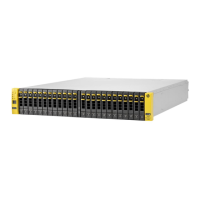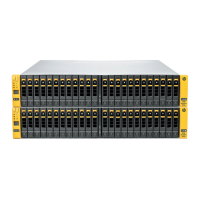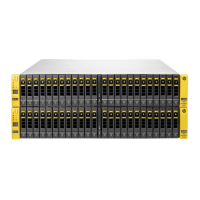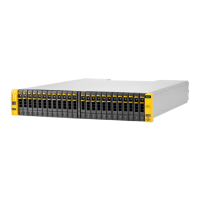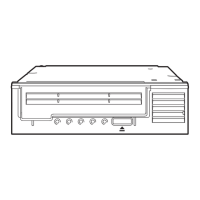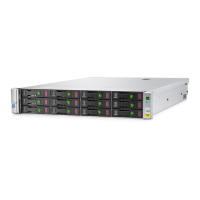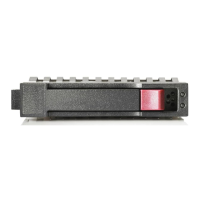3 Working with Common Provisioning Groups
You can use a common provisioning group (CPG) to create a virtual pool of logical disks that
allows virtual volumes to share the resources of the CPG and allocates space on demand. You can
create fully-provisioned virtual volumes (FPVVs) and thinly-provisioned virtual volumes (TPVVs) that
draw space from the logical disk pool.
You can use this chapter to:
• Create a CPG
• Modify a CPG
• Remove a CPG
• Query a CPG
CPG Enumeration and Configuration Objects
Many of the CPG operation objects have enumerations or contain sub-objects, as described in the
following sections.
CPG LDLayout JSON Objects
LDLayout is a sub-object of the CPG object for creation and modification. It is also returned within
the CPG’s SAGrowth and SDGrowth objects upon query of CPGs. See Table 8 (page 29).
Table 8 JSON Objects for CPG LDLayout
DescriptionIgnored ValuesAPI TypeJSON TypeMember
Specifies the RAID type for the
logical disk.
Negative valuesRAIDType enumnumberRAIDType
Specifies the set size in the
number of chunklets.
Negative valuesigint32numbersetSize
Specifies that the layout must
support the failure of one port
Negative valuesHA enumnumberHA
pair, one cage, or one
magazine.
Specifies the chunklet location
preference characteristics.
Negative valueschunkletPosPref
enum
numberchunkletPosPref
Specifies patterns for candidate
disks.
Nonearray of
diskPatterns
objects
array of
objects
diskPatterns
CPG RAIDType Enumeration
Upon creation, modification, and query, the RAID type is specified as an enumeration as shown
in Table 9 (page 29).
Table 9 CPG RAIDType Enumeration
DescriptionValueSymbol
RAID level 01R0
RAID level 12R1
RAID level 53R5
RAID level 64R6
CPG Enumeration and Configuration Objects 29

